
Imagine that you want to take photos from asteroids, actually nearby photos with a stereo camera, that subsequently would allow to generate 3D models of those asteroids from acquired stereo images. What would be needed to get that done?
Obviously, one would have to apply for a space flight license inside our solar system, maybe for the Swedish type of a spacecraft that goes about 1% c (speed of light) on shorter distance as for example to Mars orbit but it can accelerate faster on longer distances beyond those 60 mill. km to Mars orbit if the information is right that can be obtained e.g. from the information field.
So when applying for a space flight license inside our Solar system this should approve for going outside of the about 500 km Earth atmosphere. A co-pilot would be needed with a license to have the spacecraft going horizontally inside commercial air lanes upto an altitude of about 20 km. This may continue for some extended time at usual airplane velocity on a horizontal path in order to get to a position where it is safe to go vertically through the satellite and their debris space sector.
NASA or other space flight organizations may provide a service to estimate a good position for each flight where one can safely start a quick vertical ascension to above 500 km. From there onwards, navigation can take place only by stars on the celestial sphere in addition to monitoring the positions of our Sun and of the planets in our solar system. Eventually, one may be able to detect brightest stars why it is essential to memorize their coordinates, like Sirius RA 6h 45' DEC -16° 42', Alpha Centauri RA 14h 39' DEC -60° 50', Wega, Arcturus,... and to build-up a sound intuition for the location of those stars on the celestial sphere.
Certainly, there are more things to do and to think about when preparing for a multi-day jurney in our solar system as it is also the case for each jurney on Earth. Additionally, the special condition that there is no access to any services from Earth, like for example health care and food supply, has to be taken into account in order to make it a convenient and successful mission.
The area inside the 30 m circle that is surrounded by 19 LED lights could serve as a spaceport for the departer to and for the arrival from an Asteroids flight. The LED lights on the right show the way to a convenient seating bench that can be used to wait for a next flight to the asteroids belt.
The site mainly serves a research task to find out what the solar share is with regard to the climate change that currently happens on Earth.

Update 2024-10-14:
A proposal has arrived (Thanks!) for generating remote 3D views from asteroids:
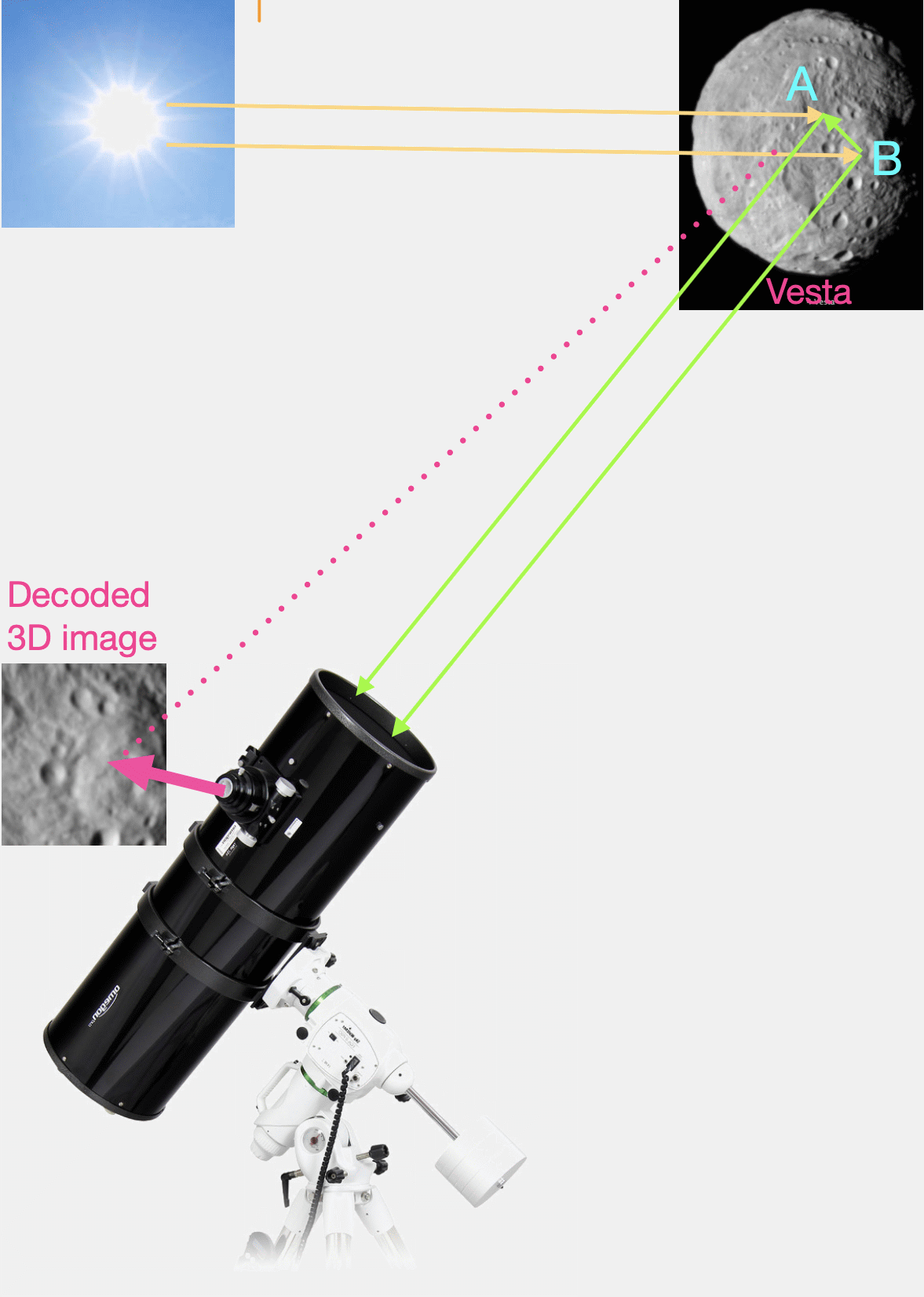
Update 2024-05-30:
An aerial view has been generated by Felix while flying with his drone over the research field. Thanks Felix for taking this high-level image from a 100 m altitude. It shows the 30 m circle of 19 spacetime measurement points that additionally have LED lights installed which serve as landing lights for the spaceport. There are 2 LEDs (West side, M44, M45) out of 17 LEDs in the circle that had problems which will be addressed soon. A levelling out inside the spaceport area is still in progress (bright spots and lanes).
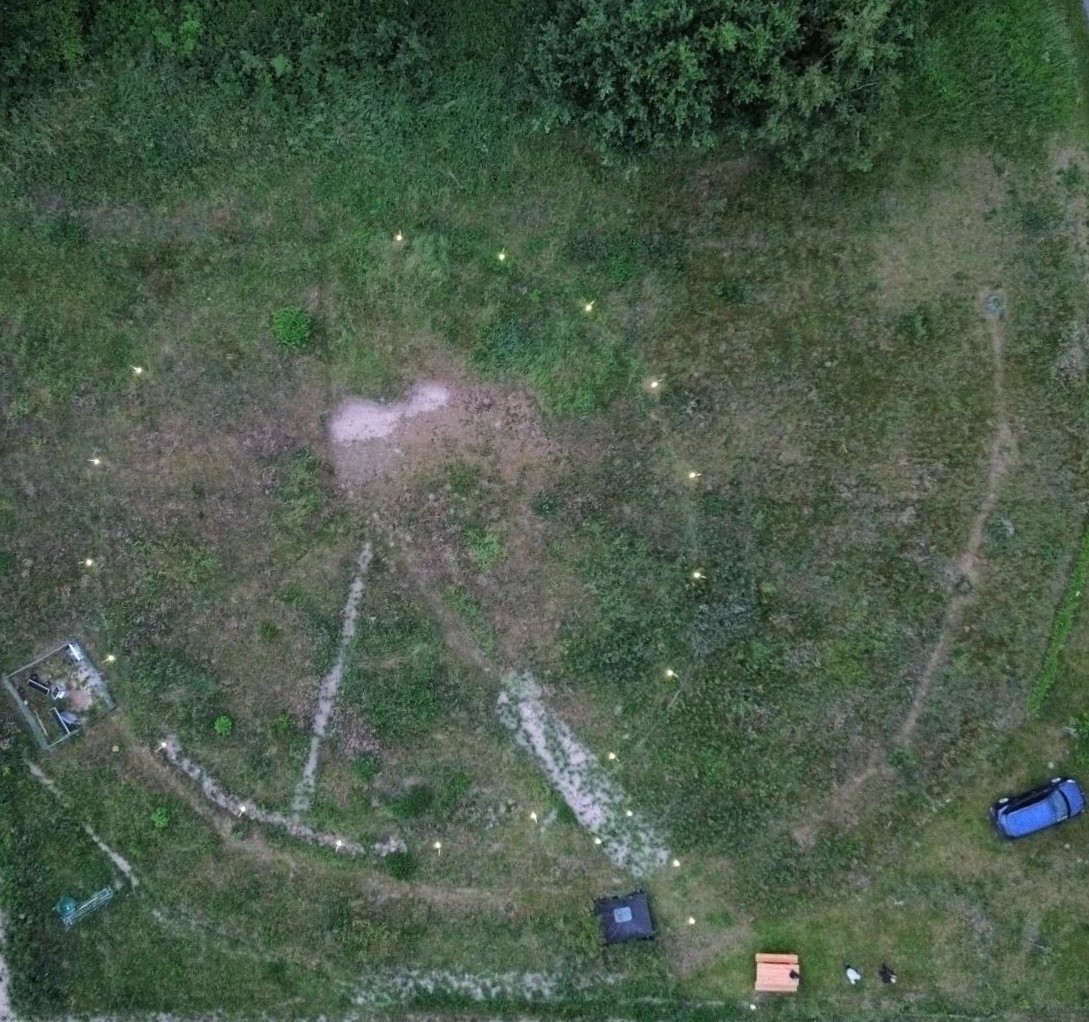
Update 2024-05-08:
The spaceport got LED landing lights installed that can be activated on demand.


Update 2023-09-20:
A seating bench "Astronomy" has been designed and perfectly manufactured by Stefan. Thank you Stefan!
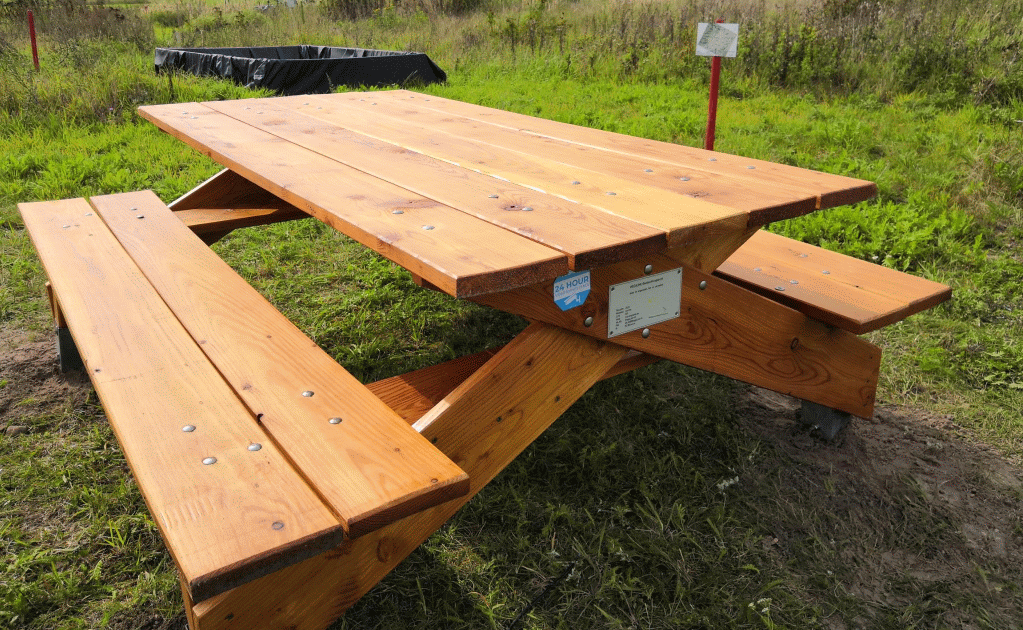
Update 2022-04-24:
An astro camera SV305M Pro has been tested on the Omegon Pro Astrograph 254/1016 telescope. A comparison with the Stellarium program suggests that stars can be detected upto the mag 17 to mag 18 range.
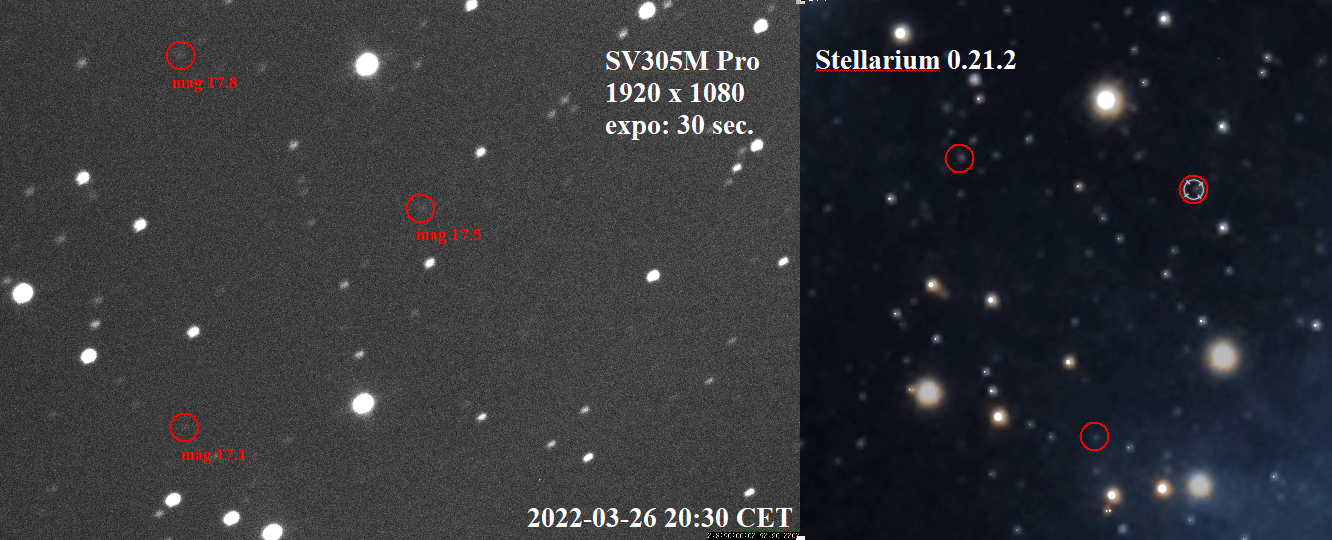
Update 2022-02-27:
Feedback to the Asteroids project has arrived from open-minded scientists:
Dmitri Kirko, physicist, Moscow, his viewpoint, 2022-02-26:
To realize the problem of protecting the Earth from asteroids it is advisable to look for new physical effects and create fundamentally new inventions, followed by their theoretical explanation, and technical realization.
Marcus Reid, researcher, Munich, 2022-02-21:
A propulsion system with a permanent 1 g accelleration could bring a spaceship in a few days through the solar system. The physics would be based on generating a force against the local quantum frame by making the permanent, intrinsic energy exchange ASYMMETRIC between particles like protons, neutrons, electrons and the quantum vacuum.
Peter Wright, engineer, Bangkok, 2022-02-20:
Ion propulsion could be used already now for space probes that could go to asteroids orbits between Mars and Jupiter. They could use material analysis methods e.g. based on X-ray backscatter signals for discovering the surface material composition during an asteroid fly-by. Furthermore, a camera system could detect smaller asteroids from an observation position inside the asteroids belt which solar light reflections are too weak and which therefore are not visible from Earth.
Update 2021-12-31:
The previously proposed astronomical equipment has been tested with a Sony Alpha 6000 camera.
Please find below an image that shows stars in the Pleiades that point to a minimal magnitude of mag 15.55 which can be observed with used equipment. This is just a first shot which can certainly be improved when using a special astronomy camera that can be cooled down below ambient temperature to further reduce the noise in the image.
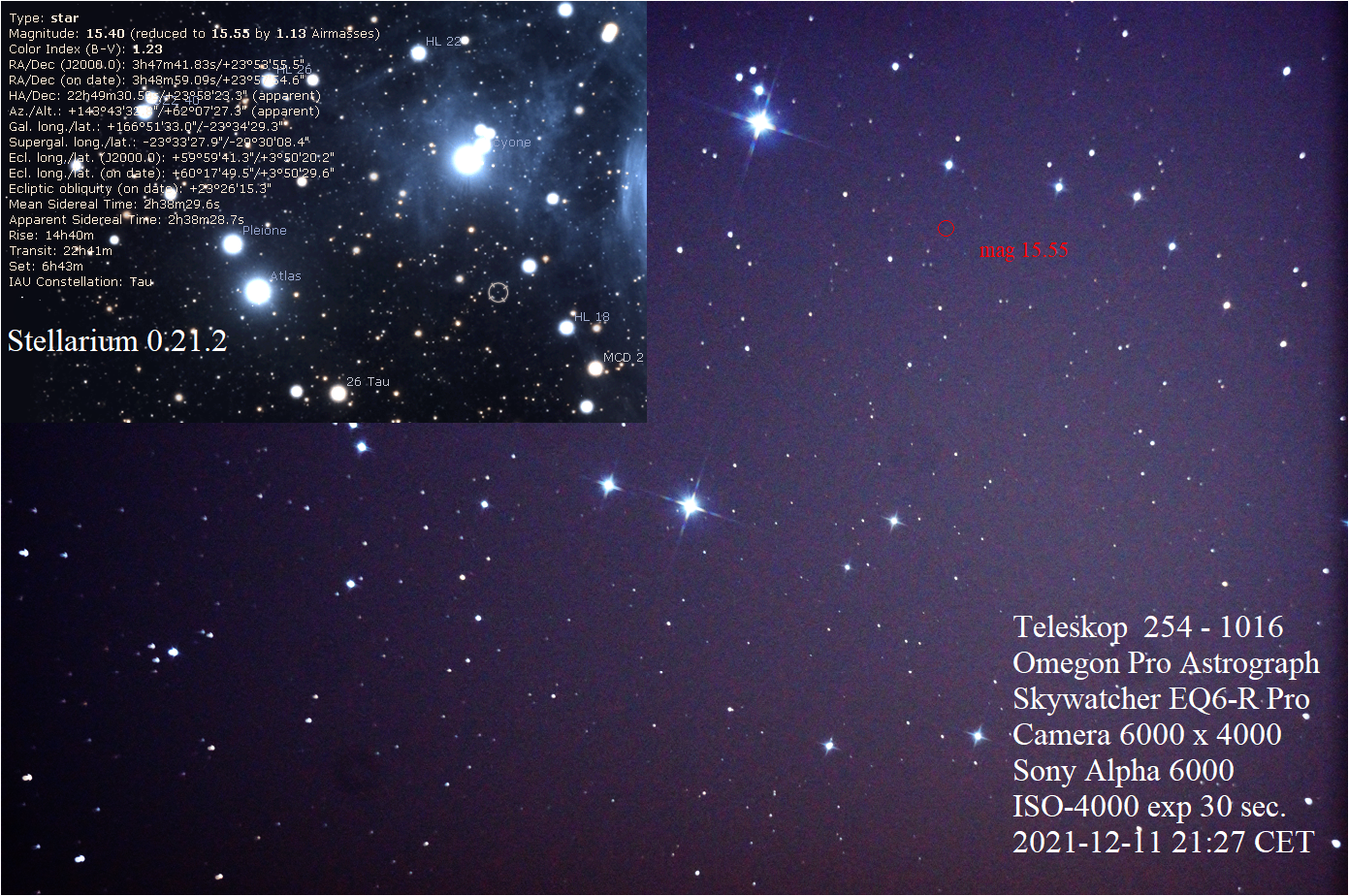
Update 2021-04-05:
The project focuses on refining the ephemerides of asteroids (also called minor planets). The following recommendations may help to find the right equipment for those who also want to contribute to that task.
MOUNT
Most important is a stable mount that let a telescope smoothly automatically follow the star movement on sky. The Skywatcher Mount EQ6-R Pro SynScan GoTo is capable of moving telescopes of upto 20 kg:
TELESCOPE
The observation of asteroids requires a telescope with high aperture and high focal ratio in order to collect as much as possible light from faintest objects in the sky. The Omegon Teleskop Pro Astrograph 254/1016 OTA offers an aperture of 254 mm and a focal ratio of f/4. Going below those parameters is not recommended for observing asteroids. Otherwise, better parameters would be desirable but will increase costs considerably.
EYEPIECE
A star alignment of the telescope before astronomical observations demands for an ocular with a not too small focal length in order to have alignment stars inside the telescope's field of view. Using an EXPLORE SCIENTIFIC 70° Okular 30mm (2") eyepiece results in about a 2° field of view which allows for aligning the telescope's pointing position conveniently in most situations.
ASTRO CAMERA
The camera will be mounted on the telescope in order to take digital images. A mono camera with large pixels and a high quantum efficiency with low noise is desirable. To reduce noise, astro cameras can usually be cooled down to about 40 degree below ambient temperature like the ALccd-QHY Camera 174 cool Mono:
TELESCOPE and MOUNT combined system
The total cost of a complete telescope system with a digital camera can be reduced to about 3700 € (January 2022) when going for a combined system Omegon Teleskop Pro Astrograph 254/1016 EQ6-R Pro.
Above components should serve as a guideline for a suitable equipment that is capable of detecting a major part of asteroids and to determine their positions in order to estimate their ephemerides.
The information will hopefully be helpful to find a starting point for selecting the right equipment for the asteroids survey.